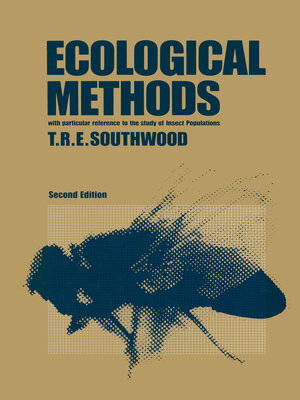Ecological Methods
ebook ∣ With Particular Reference to the Study of Insect Populations · Humanities, Social Sciences and Law
By T. R. Southwood

Sign up to save your library
With an OverDrive account, you can save your favorite libraries for at-a-glance information about availability. Find out more about OverDrive accounts.
Find this title in Libby, the library reading app by OverDrive.



Search for a digital library with this title
Title found at these libraries:
| Library Name | Distance |
|---|---|
| Loading... |
the virtual impossibility of extracting the many different species from a habitat with equal efficiency by a single method (e.g. Nef, 1960). 1.1 Population estimates Population estimates can be classified into a number of different types; the most convenient classification is that adopted by Morris (1955), although he used the terms somewhat differently in a later paper (1960). 1.1.1 Absolute and related estimates The animal numbers may be expressed as a density per unit area of the ground of the habitat. Such estimates are given by nearest neighbour and related techniques (Chapter 2), marking and recapture (Chapter 3), by sampling a known fraction of the habitat (Chapter 4-6) and by removal sampling and random walk techniques (Chapter 7). Absolute population The number of animals per unit area (e.g. hectare, acre). It is almost impossible to construct a budget or to study mortality factors without the conversion of population estimates to absolute figures, for not only do insects often move from the plant to the soil at different developmental stages, but the amount of plant material is itself always changing. The importance of obtaining absolute estimates cannot be overemphasized.







